Continuing with our “Definitive Guide to Terraforming“, Universe Today is happy to present to our guide to terraforming Venus. It might be possible to do this someday, when our technology advances far enough. But the challenges are numerous and quite specific.
The planet Venus is often referred to as Earth’s “Sister Planet”, and rightly so. In addition to being almost the same size, Venus and Earth are similar in mass and have very similar compositions (both being terrestrial planets). As a neighboring planet to Earth, Venus also orbits the Sun within its “Goldilocks Zone” (aka. habitable zone). But of course, there are many key difference between the planets that make Venus uninhabitable.
For starters, it’s atmosphere over 90 times thicker than Earth’s, its average surface temperature is hot enough to melt lead, and the air is a toxic fume consisting of carbon dioxide and sulfuric acid. As such, if humans want to live there, some serious ecological engineering – aka. terraforming – is needed first. And given its similarities to Earth, many scientists think Venus would be a prime candidate for terraforming, even more so than Mars!
Over the past century, the concept of terraforming Venus has appeared multiple times, both in terms of science fiction and as the subject of scholarly study. Whereas treatments of the subject were largely fantastical in the early 20th century, a transition occurred with the beginning of the Space Age. As our knowledge of Venus improved, so too did the proposals for altering the landscape to be more suitable for human habitation.
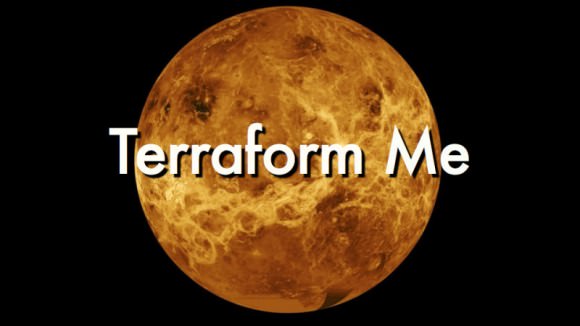
Examples in Fiction:
Since the early 20th century, the idea of ecologically transforming Venus has been explored in fiction. The earliest known example is Olaf Stapleton’s Last And First Men (1930), two chapters of which are dedicated to describing how humanity’s descendants terraform Venus after Earth becomes uninhabitable; and in the process, commit genocide against the native aquatic life.
By the 1950s and 60s, owing to the beginning of the Space Age, terraforming began to appear in many works of science fiction. Poul Anderson also wrote extensively about terraforming in the 1950s. In his 1954 novel, The Big Rain, Venus is altered through planetary engineering techniques over a very long period of time. The book was so influential that the term term “Big Rain” has since come to be synonymous with the terraforming of Venus.
In 1991, author G. David Nordley suggested in his short story (“The Snows of Venus”) that Venus might be spun-up to a day-length of 30 Earth days by exporting its atmosphere of Venus via mass drivers. Author Kim Stanley Robinson became famous for his realistic depiction of terraforming in the Mars Trilogy – which included Red Mars, Green Mars and Blue Mars.
In 2012, he followed this series up with the release of 2312, a science fiction novel that dealt with the colonization of the entire Solar System – which includes Venus. The novel also explored the many ways in which Venus could be terraformed, ranging from global cooling to carbon sequestration, all of which were based on scholarly studies and proposals.

Proposed Methods:
The first proposed method of terraforming Venus was made in 1961 by Carl Sagan. In a paper titled “The Planet Venus“, he argued for the use of genetically engineered bacteria to transform the carbon in the atmosphere into organic molecules. However, this was rendered impractical due to the subsequent discovery of sulfuric acid in Venus’ clouds and the effects of solar wind.
In his 1991 study “Terraforming Venus Quickly“, British scientist Paul Birch proposed bombarding Venus’ atmosphere with hydrogen. The resulting reaction would produce graphite and water, the latter of which would fall to the surface and cover roughly 80% of the surface in oceans. Given the amount of hydrogen needed, it would have to harvested directly from one of the gas giant’s or their moon’s ice.
The proposal would also require iron aerosol to be added to the atmosphere, which could be derived from a number of sources (i.e. the Moon, asteroids, Mercury). The remaining atmosphere, estimated to be around 3 bars (three times that of Earth), would mainly be composed of nitrogen, some of which will dissolve into the new oceans, reducing atmospheric pressure further.
Another idea is to bombard Venus with refined magnesium and calcium, which would sequester carbon in the form of calcium and magnesium carbonates. In their 1996 paper, “The stability of climate on Venus“, Mark Bullock and David H. Grinspoon of the University of Colorado at Boulder indicated that Venus’ own deposits of calcium and magnesium oxides could be used for this process. Through mining, these minerals could be exposed to the surface, thus acting as carbon sinks.
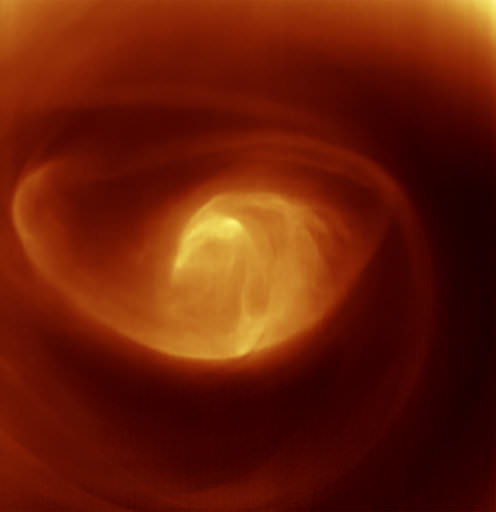
However, Bullock and Grinspoon also claim this would have a limited cooling effect – to about 400 K (126.85 °C; 260.33 °F) and would only reduce the atmospheric pressure to an estimated 43 bars. Hence, additional supplies of calcium and magnesium would be needed to achieve the 8×1020 kg of calcium or 5×1020 kg of magnesium required, which would most likely have to be mined from asteroids.
The concept of solar shades has also been explored, which would involve using either a series of small spacecraft or a single large lens to divert sunlight from a planet’s surface, thus reducing global temperatures. For Venus, which absorbs twice as much sunlight as Earth, solar radiation is believed to have played a major role in the runaway greenhouse effect that has made it what it is today.
Such a shade could be space-based, located in the Sun–Venus L1 Lagrangian point, where it would prevent some sunlight from reaching Venus. In addition, this shade would also serve to block the solar wind, thus reducing the amount of radiation Venus’ surface is exposed to (another key issue when it comes to habitability). This cooling would result in the liquefaction or freezing of atmospheric CO², which would then be depsotied on the surface as dry ice (which could be shipped off-world or sequestered underground).
Alternately, solar reflectors could be placed in the atmosphere or on the surface. This could consist of large reflective balloons, sheets of carbon nanotubes or graphene, or low-albedo material. The former possibility offers two advantages: for one, atmospheric reflectors could be built in-situ, using locally-sourced carbon. Second, Venus’ atmosphere is dense enough that such structures could easily float atop the clouds.
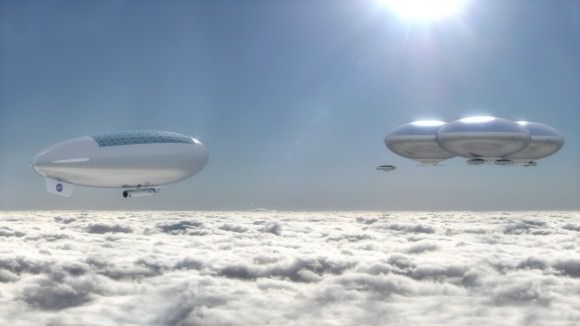
NASA scientist Geoffrey A. Landis has also proposed that cities could be built above Venus’ clouds, which in turn could act as both a solar shield and as processing stations. These would provide initial living spaces for colonists, and would act as terraformers, gradually converting Venus’ atmosphere into something livable so the colonists could migrate to the surface.
Another suggestion has to do with Venus’ rotational speed. Venus rotates once every 243 days, which is by far the slowest rotation period of any of the major planets. As such, Venus’s experiences extremely long days and nights, which could prove difficult for most known Earth species of plants and animals to adapt to. The slow rotation also probably accounts for the lack of a significant magnetic field.
To address this, British Interplanetary Society member Paul Birch suggested creating a system of orbital solar mirrors near the L1 Lagrange point between Venus and the Sun. Combined with a soletta mirror in polar orbit, these would provide a 24-hour light cycle.
It has also been suggested that Venus’ rotational velocity could be spun-up by either striking the surface with impactors or conducting close fly-bys using bodies larger than 96.5 km (60 miles) in diameter. There is also the suggestion of using using mass drivers and dynamic compression members to generate the rotational force needed to speed Venus up to the point where it experienced a day-night cycle identical to Earth’s (see above).
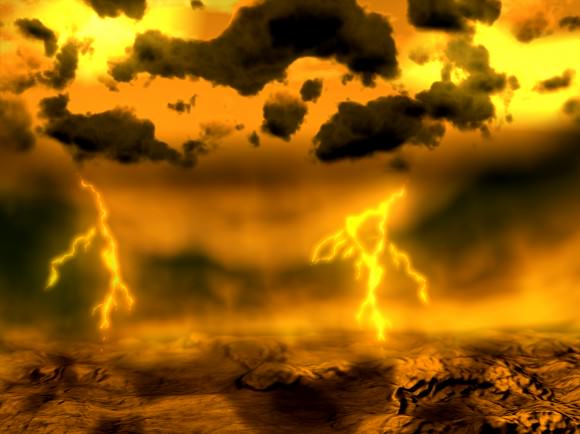
Then there’s the possibility of removing some of Venus’ atmosphere, which could accomplished in a number of ways. For starters, impactors directed at the surface would blow some of the atmosphere off into space. Other methods include space elevators and mass accelerators (ideally placed on balloons or platforms above the clouds), which could gradually scoop gas from the atmosphere and eject it into space.
Potential Benefits:
One of the main reasons for colonizing Venus, and altering its climate for human settlement, is the prospect of creating a “backup location” for humanity. And given the range of choices – Mars, the Moon, and the Outer Solar System – Venus has several things going for it the others do not. All of these highlight why Venus is known as Earth’s “Sister Planet”.
For starters, Venus is a terrestrial planet that is similar in size, mass and composition to Earth. This is why Venus has similar gravity to Earth, which is about of what we experience 90% (or 0.904 g, to be exact. As a result, humans living on Venus would be at a far lower risk of developing health problems associated with time spent in weightlessness and microgravity environments – such as osteoporosis and muscle degeneration.
Venus’s relative proximity to Earth would also make transportation and communications easier than with most other locations in the solar system. With current propulsion systems, launch windows to Venus occur every 584 days, compared to the 780 days for Mars. Flight time is also somewhat shorter since Venus is the closest planet to Earth. At it’s closest approach, it is 40 million km distant, compared to 55 million km for Mars.
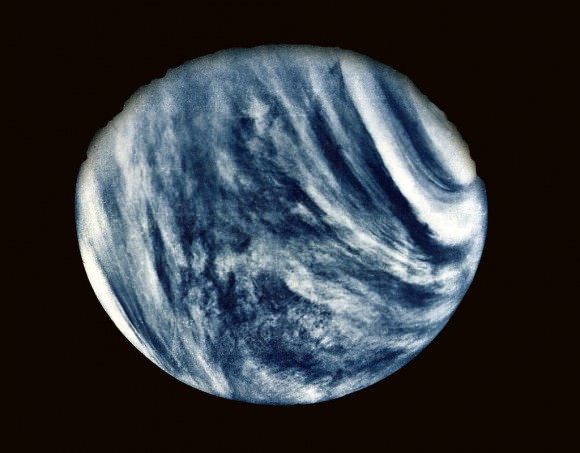
Another reason has to do with Venus’ runaway greenhouse effect, which is the reason for the planet’s extreme heat and atmospheric density. In testing out various ecological engineering techniques, our scientists would learn a great deal about their effectiveness. This information, in turn, will come in mighty handy in the ongoing fight against Climate Change here on Earth.
And in the coming decades, this fight is likely to become rather intense. As the NOAA reported in March of 2015, carbon dioxide levels in the atmosphere have now surpassed 400 ppm, a level not seen since the the Pliocene Era – when global temperatures and sea level were significantly higher. And as a series of scenarios computed by NASA show, this trend is likely to continue until 2100, with severe consequences.
In one scenario, carbon dioxide emissions will level off at about 550 ppm toward the end of the century, resulting in an average temperature increase of 2.5 °C (4.5 °F). In the second scenario, carbon dioxide emissions rise to about 800 ppm, resulting in an average increase of about 4.5 °C (8 °F). Whereas the increases predicted in the first scenario are sustainable, in the latter scenario, life will become untenable on many parts of the planet.
So in addition to creating a second home for humanity, terraforming Venus could also help to ensure that Earth remains a viable home for our species. And of course, the fact that Venus is a terrestrial planet means that it has abundant natural resources that could be harvested, helping humanity to achieve a “post-scarcity” economy.
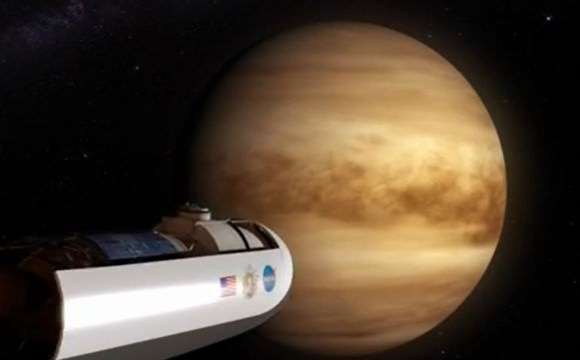
Challenges:
Beyond the similarities Venus’ has with Earth (i.e. size, mass and composition), there are numerous differences that would make terraforming and colonizing it a major challenge. For one, reducing the heat and pressure of Venus’ atmosphere would require a tremendous amount of energy and resources. It would also require infrastructure that does not yet exist and would be very expensive to build.
For instance, it would require immense amounts of metal and advanced materials to build an orbital shade large enough to cool Venus’ atmosphere to the point that its greenhouse effect would be arrested. Such a structure, if positioned at L1, would also need to be four times the diameter of Venus itself. It would have to be assembled in space, which would require a massive fleet of robot assemblers.
In contrast, increasing the speed of Venus’s rotation would require tremendous energy, not to mention a significant number of impactors that would have to cone from the outer solar System – mainly from the Kuiper Belt. In all of these cases, a large fleet of spaceships would be needed to haul the necessary material, and they would need to be equipped with advanced drive systems that could make the trip in a reasonable amount of time.
Currently, no such drive systems exist, and conventional methods – ranging from ion engines to chemical propellants – are neither fast or economical enough. To illustrate, NASA’s New Horizons mission took more than 11 years to get make its historic rendezvous with Pluto in the Kuiper Belt, using conventional rockets and the gravity-assist method.
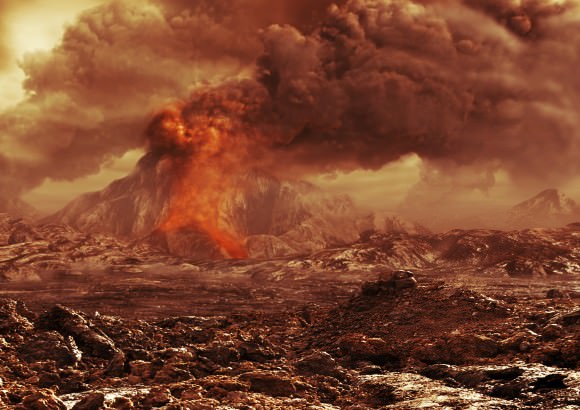
Meanwhile, the Dawn mission, which relied relied on ionic propulsion, took almost four years to reach Vesta in the Asteroid Belt. Neither method is practical for making repeated trips to the Kuiper Belt and hauling back icy comets and asteroids, and humanity has nowhere near the number of ships we would need to do this.
The same problem of resources holds true for the concept of placing solar reflectors above the clouds. The amount of material would have to be large and would have to remain in place long after the atmosphere had been modified, since Venus’s surface is currently completely enshrouded by clouds. Also, Venus already has highly reflective clouds, so any approach would have to significantly surpass its current albedo (0.65) to make a difference.
And when it comes to removing Venus’ atmosphere, things are equally challenging. In 1994, James B. Pollack and Carl Sagan conducted calculations that indicated that an impactor measuring 700 km in diameter striking Venus at high velocity would less than a thousandth of the total atmosphere. What’s more, there would be diminishing returns as the atmosphere’s density decreases, which means thousands of giant impactors would be needed.
In addition, most of the ejected atmosphere would go into solar orbit near Venus, and – without further intervention – could be captured by Venus’s gravitational field and become part of the atmosphere once again. Removing atmospheric gas using space elevators would be difficult because the planet’s geostationary orbit lies an impractical distance above the surface, where removing using mass accelerators would be time-consuming and very expensive.
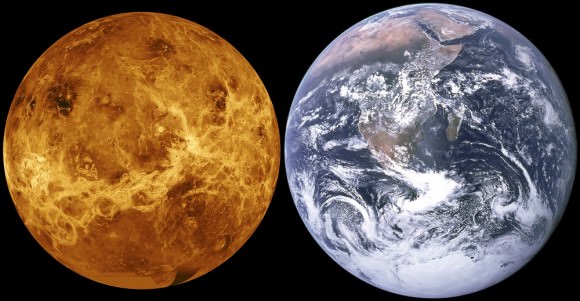
Conclusion:
In sum, the potential benefits of terraforming Venus are clear. Humanity would have a second home, we would be able to add its resources to our own, and we would learn valuable techniques that could help prevent cataclysmic change here on Earth. However, getting to the point where those benefits could be realized is the hard part.
Like most proposed terraforming ventures, many obstacles need to be addressed beforehand. Foremost among these are transportation and logistics, mobilizing a massive fleet of robot workers and hauling craft to harness the necessary resources. After that, a multi-generational commitment would need to be made, providing financial resources to see the job through to completion. Not an easy task under the most ideal of conditions.
Suffice it to say, this is something that humanity cannot do in the short-run. However, looking to the future, the idea of Venus becoming our “Sister Planet” in every way imaginable – with oceans, arable land, wildlife and cities – certainly seems like a beautiful and feasible goal. The only question is, how long will we have to wait?
We have written many interesting articles about terraforming here at Universe Today. Here’s The Definitive Guide To Terraforming, Could We Terraform the Moon?, Should We Terraform Mars?, How Do We Terraform Mars? and Student Team Wants to Terraform Mars Using Cyanobacteria.
We’ve also got articles that explore the more radical side of terraforming, like Could We Terraform Jupiter?, Could We Terraform The Sun?, and Could We Terraform A Black Hole?
For more information, check out Terraforming Mars at NASA Quest! and NASA’s Journey to Mars.
And if you liked the video posted above, come check out our Patreon page and find out how you can get these videos early while helping us bring you more great content!


Floating sky cities maybe.. but terraforming all of Venus? Venus’ atmosphere is primarily CO2. Were we to figure out a way to easily break down that molecule to create an oxygen rich atmosphere and somehow blow off, collect or sequester the carbon, then maybe? BUT, it is possible that Venus is constantly producing CO2 via volcanic activity and therefor replenishing that greenhouse gas at far too high a rate to compensate for?
Drop a world ocean (Europe, Ganymede) on it, come back in a few million years after the newly molten crust hardens.
Even successful terraforming doesn’t mean that it is livable for human beings. Earth itself has been livable for us only during a short period of time. Life started here with conditions which we cannot survive. Any living planet will have its own unique evolutionary path of life, atmosphere and geology. It is not enough to make a planet habitable, we have to make it a copy of present Earth in order to live there.
Sorry to rain in on Fraser’s parade, but floating cities or factories won’t work on Venus. That’s because of the incredible wind speeds (“Strong 300 km/h (190 mph) winds at the cloud tops circle the planet about every four to five earth days” – wikipedia) and the much higher density of the atmosphere. Those combined would make it impossible for any large structure to survive, not to mention the sulfuric acid.
Pfftt… that’s not a problem. We just make controlling the winds part of the project. It’s gonna be a piece of cake.
Dude, one Venus day is 243 earth day’s , not 116, interesting article though.
That’s the amount of time it takes the planet to rotate. But that does not mean it takes 243 days for the Sun to return to the same place in the sky. That is what is known as a Solar Day, which is the result of both the planet’s rotation around the Sun and on its axis.
116 earth days is correct for a solar day which is the time from sunrise to sunrise, or sunset to sunset, or noon to noon, …
It takes Venus 243 Earth days to complete one revolution, but there are 116
Earth days of sunlight. The article seems to imply that carbon dioxide is
responsible for the hellish conditions on Venus – and that the Earth is next due
to evil Republicans. Wrong! Venus is so hot because, with 116 days of sunlight,
the surface of Venus heats up and carbon dioxide outgases from the surface.
Also, Venus is closer to the Sun, and that would make Venus hot.
The far side of Venus is also dark for the same period of time, and therefore should radiate enough heat to balance out the temperature. Mercury is closer to the Sun, but temps drop sharply on the dark side due to a lack of a significant atmosphere.
The atmosphere absorbs the heat and does not let it dissipate quickly enough, so the runaway greenhouse effect is indeed a reality, despite what some politicians choose to believe.
Maybe heavy bench pressing and unbalanced training program has rotated Fraser’s shoulders forward in an unnatural way.
I think the simplest way to get rid of the CO2 would be a little creative bioengineering. Create a bacteria with some plant genes (for photosynthesis), and seed Venus’ upper atmosphere. Assuming that their tiny mass would make them buoyant enough to stay in the upper atmosphere where the environment is more survivable (UV might be an issue, though), they could live off by metabolizing the CO2 and other chemicals in that environment, into O2 and other byproducts (which may either stay in the atmosphere or rain down on the planet’s surface.)
Yep. Bioengineering, and make it excrete pure carbon in some dark inertish form such as buckytubes or graphite. The flakes of graphite would sink, raising the oxygen content in the atmosphere, and making the planet darker. You may then get large chemical convective storms as 2.CO2 -> 2.CO + O2 in the lower atmosphere and the reverse reaction in the relatively cool upper atmosphere. This would fetch heat from the surface to be radiated out into space.
That, plus a reflector at the inner Lagrange point to block some of the sun.
@Lynxworx A very similar suggestion was published in Popular Science about 55 years ago (1959, as I recall… maybe April or May issue). The author at that time suggested seeding the upper atmosphere with a hardy strain of bluegreen algae which would feed on the CO2 and sunlight in the cooler atmosphere, releasing oxygen and shading the surface as it spread. Eventually the older algae would grow heavier and sink, burning up and dropping carbon residue. At some point, the author figured, it would be cool enough for rains to start and further clear the atmosphere and cool the surface. I remember reading this when I was about 10 years old and thought that it was such a great idea that it has stuck with me ever since. Thought it would be a good sci-fi story to have someone find a way to secretly stash a container on a Venus bound probe and release it high in the atmosphere.
I wonder if Popular Science has an archive?
Are you folks sure you’re not thinking of Sagan’s suggestion, circa 1961 and published in Science magazine? He made this very same suggestion, using genetically-modified algae to convert the CO2 into graphite and water. And the proposal became unfeasible due to the subsequent discovery of sulfuric acid in Venus’ clouds.
Sun screen, lots of sun screen… No really. All we have to do is wait several hundred million years or so.. then move on in. OR praps it won’t take that long? Solar output might change and strip Venus’s atmosphere much faster? Of course, if that happened, we’d be breathing vacuum here on Earth too?
IF we ever succeed in terraforming Venus.. will there be Taco trucks?
“Days of yore”? Cut! … Yes, I’d have to try a second or third take, too. 🙂 And while one might think a quick trip to the 420 apothecary might be in order, this is a tough problem requiring at least a few minutes of “real” clarity.
Aqua4U, I’d agree with you that there must be a replenishing source for the CO2 and I would love to see the best paper on an Venusian atmospheric model that points to some X rate of CO2 production from the surface. Consider that even more brisk Solar Wind and Flux have been doing the same thing to Venus as with Mars, that is, without a magnetic field, stripping off the atmosphere for billions of years.
Fraser’s accounting of hellish things one can do to a hellish environment makes one sense that there isn’t much harm one can do to this planet that would not be beneficial. The first funds for this project should go to pulling Gary Larson out of retirement to create a series of Venusian Farsides
The idea of sequestering CO2 onto the surface by cooling doesn’t hold water. If Venus’s interior remains hot and active volcanism is common, a tug of war would ensue between the cooling and production of dry ice and reheating of the dry ice by surface rock. Iceland has such interactions. I would think that the dry ice would win but there would be many regions where the venu-thermal heat creates geysers – all kinds of outgassing.
For Venus, I don’t buy the idea of impacting one or many asteroid or cometary objects. Too messy. This “terraforming” requires finesse. One alternative would be to move a cometary type object to the Venusian-Sun L1 point and let the Sun’s heat create a cooling shade from the outgassing of the object in front of Venus. It may not work as planned but it would be very cool looking for Earth observers!
Another approach would be to declare CO2, plus energy, our friend. Rather than freeze out CO2, why not use a likely common element in the Venusian crust – Silicon to produce a completely stable and disposable compound – Silicon Carbide. There’s plenty of heat and Solar Flux and it would be needed. This would leave Oxygen that would be attractive to Earthlings but also generate some oxidative processes on the surface that would be interesting in the least.
Next consider finishing what nature has not – despinning the planet. First, fix a single humongous propulsion system on the surface that would: 1) despin the planet, 2) propel Venus into an orbit at superior conjunction to the Earth (the opposite side of the Sun), 3) while doing all this thrusting, expel some amount of the CO2 atmosphere off the planet by way of the incredible thrust plume. Only problem with this orbit change is that one would have to do it in a single Hohman transfer orbit with an accompanying final thrusting maneuver to settle it into an Earth orbit; avoid fowling up the Earth’s orbit that we prize so highly. With that much propulsive energy at your disposal, you could choose to spin up the planet when ready.
So what does one get after all this trouble? Take Lake Erie. Dry it out and propose putting track homes on its dry lake bed. One would have some serious concoction of chemicals on the surface, some just natural stuff and others from oxidation and from the heat added and subtracted from the system. Even if one created a 100,000 Pascal atmosphere with O2 and inert N2 (oh yeah), the chemical dust circulating in the atmosphere could be really toxic. So one would have a facsimile of an Earth environment and be stuck living under domes for centuries or millennium.
So rather than vanquishing our beautiful evening and morning star by orbital mechanics and similarly destroy the incredible frozen deserts of Mars, why not produce the spherical habitats such as in Rendezvous with Rhama to offer humans a habitat beyond our surface. In the near term, inflated dome habitats made of thin film graphene on the Martian surface will be much more achievable – leaving most of Mars in its incredible natural state which is what attracts us to the planet in the first place. Elon Musk can retire in something more modest but his descendents would surely be something of Martian blue bloods.
And the Earth during all this time when we could begin terraforming Mars or Venus would be undergoing a transformation. To Eden. Despite every generation over the last 2 millenium having several predicted apocalypses, we are still here. We huddle upon just 1/10th of our surface while having quadrupled our human population in just over 100 years. But this will change. Education, World communications and some inevitable technological advances will lead, despite some chaos along the way, to a shrinking of the population to maybe about 2 billion humans within 500 years. The Earth’s ecosystem will be restored and the comfort of home will make destinations such as orbiting habitats or domed colonies on Mars or the Moon incredible places to visit and for a few to live and become Martians or “Spacetians”. Human sub-species will develop but not necessarily inclined to procreate into billions.
Cool thought, but I would say, economically infeasible. It would be easier to build an artificial planet than it would to terra-form Venus. Advantage of building an artificial planet is that it can start at a certain size and grow. Venus would be an all or nothing proposition. Venus might make a good source for materials, but then again there are asteroids already in space. Venus could be used as a gravity well for the artificial planet. Setting the rotation on the artificial planet would be a breeze. We would need to come up with some form of artificial gravity and atmosphere.
I think that the first terraforming will actually be on the Moon. Mars is to far away, and, it would not make a good space port, because of the escape velocity. The Moons escape velocity is very low . . . . you would have plenty of fuel left after leaving the Moon. Asteroid mining is a cool idea, but to build spaceships anywhere other than on Earth, there will have to be some way to protect the builders from radiation exposure. Underground caverns on the Moon can accomplish that. The Moon has been proven to be very much like Earth, so chances are there will be plenty of the raw materials we would need.
An interesting question is just how much sulfuric acid there is in the clouds of Venus – according to one source there’s about ~5 milligrams of H2SO4 per cubic metre in the middle cloud deck. Thus a square metre frontal area exposed to a wind moving at 1 m/s will encounter 5 milligrams of acid per second. For comparison a cumulus water cloud on Earth has about 300 milligrams per cubic metre, thus the sulfuric acid clouds of Venus are comparatively thin.
As for the 100-110 m/s winds of Venus, no one imagines the Cloud Cities will be anchored to the ground and expected to withstand such wind. Instead they’ll ride with it, producing a 4-day ‘sol’ rather than the surface’s 116 day sol. The danger isn’t windspeed, per se, but wind shear. And that’s much lower on Venus than Earth at the elevations of interest for floating colonies and bases.
Aircraft on commercial routes, here on Earth, regularly fly with, across and against winds of such speeds in Earth’s tropopause. A suitable lifting body structure could be anchored to the ground and tap the wind for lift and power, assuming high temperature anchor cable up to the task.
Total mass of sulfuric acid is about ~70-300 tonnes per square kilometre of surface. Sounds like a lot, but it’s much less than a millimetre of rain (=1,840 tonnes per square kilometre for sulfuric acid).
In the far far future maybe, transform the inner planets. Resources would be better spent to colonize the moons of Jupiter/Saturn where we know their is elements and water. Drill into the ice, and form sheltered ice colonize The pluses … No radiation, unlimited fuel, and close by resources.
And the downsides are the major distances involved, which lead to transportation and communication issues. And harvesting those resources for anything other than in-situ utilization would be very time consuming and expensive. It only makes sense to colonize out there if you’ve got infrastructure from here to Ceres.
I see no point in building mirrors and solar shades. Such structures would have to be enormous, and the materials and effort involved would be better spent on space stations.
The long rotational period would be problematic for any vegetation, and the lack of a strong magnetic field would also allow intense radiation in, which would still make the planet to dangerous to settle permanently.
The “cloud cities” idea is probably the only feasible way to do it, but there is still the problem of radiation and high winds. I suppose if there is a steady global wind current, a floating station could simply ride the winds around the planet to achieve a day/night cycle, but I imagine that might be uncomfortable for any passengers. Plus if for some reason the balloons lost pressure, a hot crushing death would await them.
Not worth the effort or risks. Mars, Ceres, and the Jovian moons would be better options, other than space stations.
There would not be a significant pressure difference between inside and outside (both ~1 bar). So, if your cloud city was punctured for some reason, only relatively slow mixing of the atmospheres would follow. You could cover the hole with a high tech saran wrap until the repair guys find a convenient time to fix it properly.
I was figuring such a balloon would need to use helium or another lighter than air gas in order to float to begin with.
I love this site, as I love astronomy and space exploration. And then there are articles like this one, the science equivalent of the Monty Python skit “How To Do It!” All sorts of pie in the sky, made of ingredients we don’t know can exist not to mention how to invent, are prescribed as the solution to terraforming Venus. We can’t dam a river without causing major environmental damage. Do we have any concept of the geological or climate effects of spinning up the planet? And, if we can do stuff like that, I think coming up with plants more adapted to a different length of day and year would be a much simpler problem. And one that we might actually have a clue about how to do today. Except of course Venus rotates nearly vertical, so there will be negligible variation of seasons.
And then there is the ludicrous tie-in to Climate Change, I suppose in an effort to make us care about the concept.
The atmosphere of Venus evens out the day/night temperatures. It rotates 60 times faster, as in twice per Earth week or so, than the planet itself rotates. Earth’s oceans don’t freeze over at night, because the atmosphere distributes the insolation heat globally. It’s enough to spin the atmosphere, don’t need to move the entire planet.
The simplest way to terraform Venus is the way earth got ‘terraformed’; get iit a large moon but lets not lend it ours, we sort of need it. Which brings me to another subject; what are we going to do to stop our moon drifting away and spoiling our planet. We won’t notice for about 500 million years but on the other hand that gives us plenty of time. We could spread a large light sail across the far side or install a ‘small’ continuous firing rocket.
The simplest way to Terra-form Venus is the way earth got ‘Terra-formed’; get it a large moon but lets not lend it ours, we sort of need it. Which brings me to another subject; what are we going to do to stop our moon drifting away and spoiling our planet. We won’t notice for about 500 million years but on the other hand that gives us plenty of time. We could spread a large light sail across the far side or install a ‘small’ continuous firing rocket.